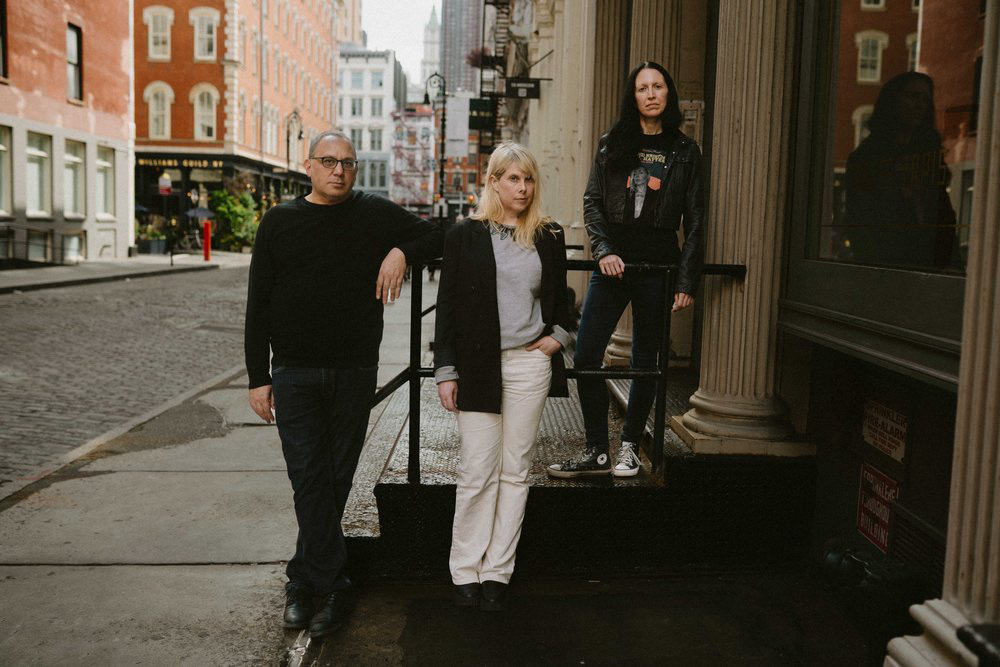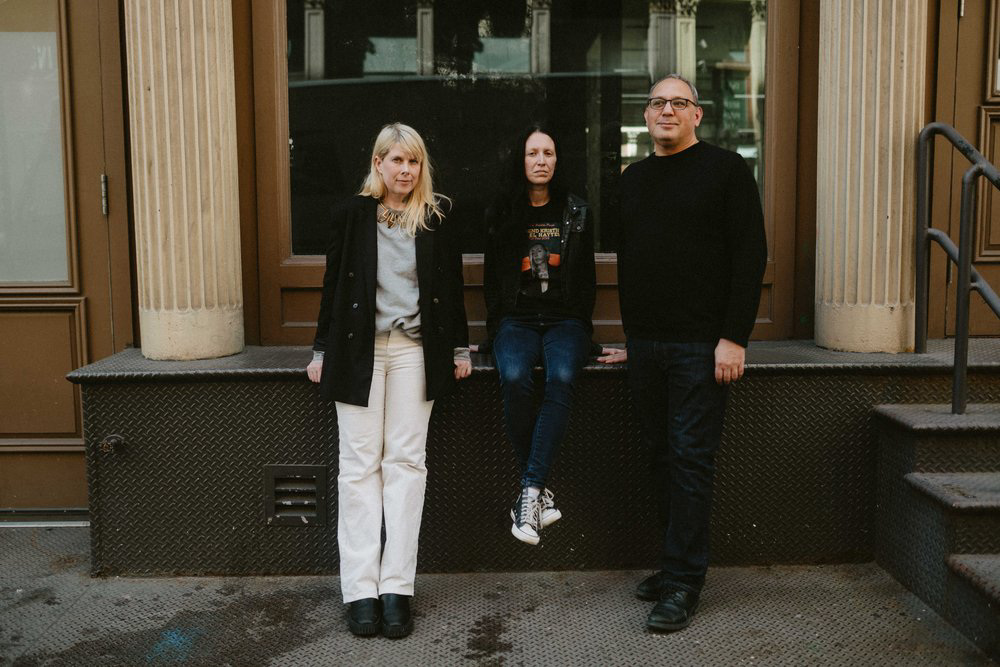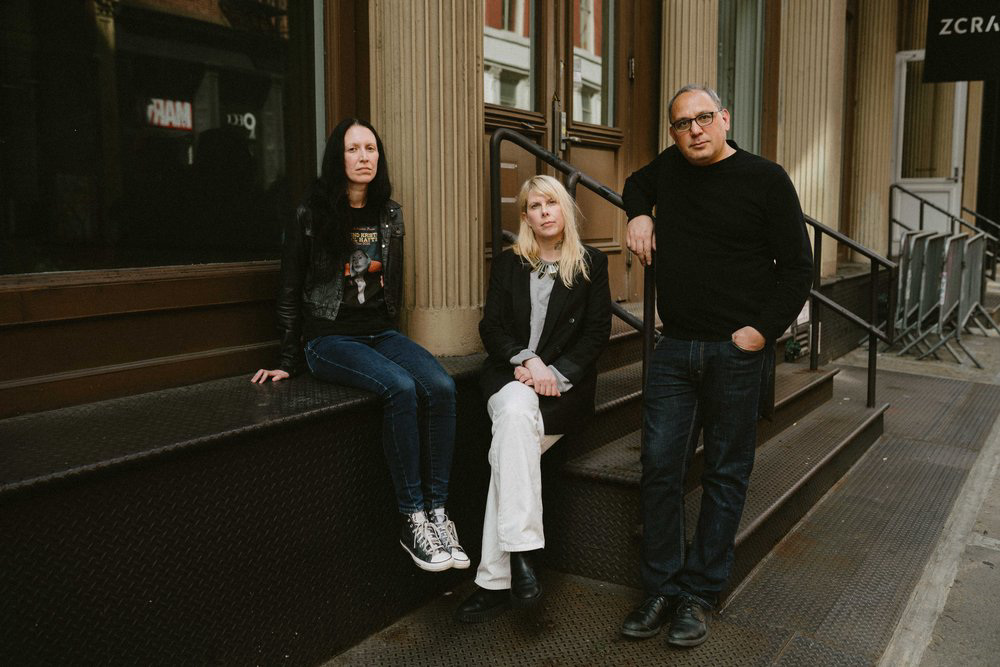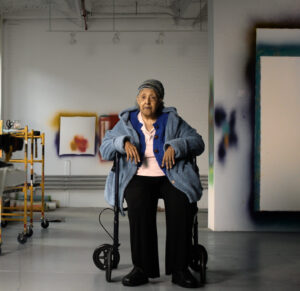
Are art critics going the way of the town crier, the ice cutter, and the milkman? More than a decade ago, critic Deborah Solomon estimated that there were fewer than 10 full-time art critics at major newspapers in the United States. Since then, that number seems to have dwindled further (as has the number of major newspapers).
What’s clear, and has been for some time, is that the future of art criticism will not look like its past. It will exist on new platforms, be funded in new ways, and be written by a new generation.
To envision what this evolution might look like, CULTURED assembled three of today’s sharpest practitioners for a roundtable discussion on a recent spring afternoon in Manhattan. Each writer is in a different place in their career and has a distinct relationship to their craft.
Since co-founding the blog Filthy Dreams in 2013, Emily Colucci has developed a cult following for her wry and eclectic takes on contemporary art, film, books, and music. Siddhartha Mitter cut his teeth as a culture reporter for WNYC public radio before joining the Village Voice and now writing long-form features for The New York Times. Johanna Fateman made her name in the art world as a critic for The New Yorker and Artforum—but has recently found herself questioning her place in the field.
Together, these writers paint a picture of a discipline undergoing deep, sometimes painful, transformation. What they share is a commitment to leaving it better off than they found it.
CULTURED: If there is a traditional path to art criticism, none of you took it. You didn’t go to journalism school or study art history. Siddhartha, you are a PhD drop-out who studied social science. Johanna, you went to art school and then co-founded the band Le Tigre. Emily, you studied humanities and social thought. Is there something you learned from your original field that might seem unrelated to art criticism but ended up informing it?
Siddhartha Mitter: Nothing goes to waste. I studied development, a term used until the late ’90s to think about how economies grow or don’t grow. I spent time in West Africa during the ’90s as a researcher, so when African contemporary art emerges in the art world, I have a sense of the political and economic history of the countries it’s coming from. But most of all, it directs me that much more towards race, gender, class, and empire. How would an economist look at this? How would a sociologist, an anthropologist?
CULTURED: Johanna, how does having gone to art school inform your work as a writer?
Johanna Fateman: I was a painting major at the School of Visual Arts. There are certainly technical, formal things that I can talk about. But more important was my career with my band, which I consider my art—how much it takes to realize something, how difficult it is to collaborate with people, how failures are generative.
CULTURED: Emily, how does your interdisciplinary humanities education shape your work?
Emily Colucci: My origin story begins my freshman year at New York University, when I took a course with Marvin Taylor called something like “Punk to Postmodernism: The Downtown New York Scene.” We read Kathy Acker and looked at David Wojnarowicz. [After] growing up in suburban Pittsburgh, my eyes were opened—there’s a whole world where we can question what language is or the role of the artist in activism.
CULTURED: Would you describe yourself as an art critic?
Colucci: I don’t know. I guess so. I like to think of Filthy Dreams as a hobby. There are barely any people with hobbies anymore. Everybody has to monetize everything.
CULTURED: Siddhartha, you said you don’t love the term art critic.
Mitter: I’ll take art writer, I’ll take culture journalist. I don’t like to use critic for myself because of the whole authority thing. More of the pieces I do are interview-driven. The “critic” hat doesn’t feel quite right for me. I can rock it, but it’s not my favorite.

CULTURED: Criticism plays very different roles in your day-to-day lives and livelihoods. Emily, you made a conscious decision to keep your writing separate from your day job.
Colucci: I don’t think I’ve ever had the option for it to be a day job. The only money I ever got for Filthy Dreams was the Warhol Foundation Arts Writers Grant in 2016. They no longer do the blog category, and I like to think I played a little part in that decision. Other than that, Filthy Dreams has never made money. There are no advertisers, no funders.
For a long time, it was just on a free WordPress site, and then I gave in to my ego and got a .org address. But having that separate from my freelance consulting writing job gives me the freedom to do whatever I want. And that, to me, is everything.
CULTURED: Siddhartha, you are writing for the ultimate establishment outlet: The New York Times. How do you feel being on the inside, but also still freelance?
Mitter: Well, it means that my pay is bad, whereas most pay in the field is humiliating. My tendency is to do pieces that involve a lot of work and a lot of time for the same word rate. So anybody with any sense who examined my situation would be like, “You’re completely nuts.” And indeed, it is catastrophic. But I don’t have children—if the ship goes down, it’s just me onboard.
Given the current state of the world, there is also unquantifiable value in putting a little something useful into the culture. That’s where the Times come in. It’s an enormous platform. If you write even 300 words in the Times, somebody might write to you about it from Australia or Paraguay.
CULTURED: Johanna, you were heavily associated with two institutions that you’re not working with anymore: The New Yorker and Artforum. The New Yorker cut back on publishing “Goings on About Town” listings and short reviews in print last summer, and you joined the boycott of Artforum last fall. How has your relationship with the field changed?
Fateman: It’s devastating. I don’t really think of myself as an art critic professionally [anymore]. There was this window of time where I could arguably say that I was supporting myself with art criticism. That’s definitely over. I write one review a month [for 4Columns], which just feels like I’m not even in the game. Maybe it’s positive because it makes it undeniable that it’s unsustainable. So it’s back to first principles: Why did I do this in the first place? What made me passionate about this? And how can I bring that to something else?
This has been an incredible time of my life. I’ve learned so much, and I’ve become a writer. But I feel like it may very well be over. It sounds so depressing, but I don’t feel depressed about it. I just finished writing a little book for “Cookie Jar” [a series of pamphlets published by the Warhol Foundation]. My band, which was active from 1999 to 2005, reunited last summer. My piece is a tour diary that uses the travelog to ruminate on the state of art criticism. That has given me a way to integrate the two tracks of my life.
CULTURED: When I was an editor at Artnet News, I found that reviews did not drive traffic. I believe there is value in them, but I had a hard time making that case to people who only cared about numbers. If there’s a dwindling audience for criticism, why do it?
Colucci: I’m entertaining myself. I get a thrill out of articulating somebody’s work in words. I think it is an art form, even though a lot of the art world just sees it as free PR. The nice thing about having my own website is I don’t really care who reads it is. I do most of my stuff on Filthy Dreams because the financial realities are so bad anyway. What is the difference between getting $100 for a piece that I’m not that happy about and getting nothing for something that I am thrilled about?
Mitter: I have a pretty clear framework of who it’s for. Ideally, it’s some combination of three different constituencies. One is artists and arts workers who are in the story. Another is the public. The third is the record. Almost any piece I research, I end up reading something that was in the Times 10 years ago, 20 years ago. The great optimism is that you’re serving all those [constituencies] with every word. It’s not one sentence for the insiders, one sentence for the public.
Fateman: When I was writing for The New Yorker, I felt like I was writing to a general reader. Like, I want to know what four things I should see in Chelsea this weekend. Artforum was more for the art world—so that was a place for me to be more provocative, and to write for the record.
Mitter: I’m always looking up old Artforum pieces.
Fateman: Same. I’m not boycotting the archive.
CULTURED: I want to talk about the phenomenon of the negative review. People are constantly lamenting that it’s a lost form. But when a pan is published, the writer often gets a lot of blowback. Have you written a pan?
Colucci: Well, you know I have.
Fateman: I have written negative reviews. But there’s something about desperate hot takes, which don’t contribute in good faith to any kind of discourse, that debases the entire profession. I think they also tend to be tied to reactionary politics on some deeper level. So that’s not my jam—I don’t need attention that much. Maybe this goes back to being in a band or being in art school, but I do feel like we’re all in this together. Artists, writers—we want to make our conversations better.
I wrote what I felt was a pretty negative review of Anicka Yi’s paintings show [at Gladstone Gallery in 2022]. And she shared it on her social media. She could have written to me and been like, “What the fuck was that?” She didn’t. Maybe she’s glad that someone was able to do that without resorting to racist, sexist slurs or cheap shots. I did write it knowing this person is in my community. I am accountable in some way.
Colucci: I want to defend the negative review because I think it has an important place in the ecosystem. Someone has to say, Hey, this actually isn’t as good as everybody is saying. It holds institutions to account—not everything they do is amazing.
Mitter: And you can have a bad show of good work.
Colucci: That’s often what I find myself writing about. Like the piece I did recently about the Whitney Biennial’s early press release text that was just this impenetrable artspeak. I’ve noticed now that it’s a little simpler. Where’s my consulting fee?

CULTURED: The Hannah Gadsby show at the Brooklyn Museum in 2023, “It’s Pablo-matic,” was an example of some critics taking real joy in being mean and others engaging in good faith.
Colucci: I didn’t like the Hannah Gadsby show, but I didn’t pile on. There was a sense of, How dare the stand-up comedian come in and have an opinion of Picasso? If that’s the kind of elitist art criticism you want, fine. It’s not what I like to do.
CULTURED: The artists presenting work in mainstream institutions have also become a lot less white more quickly than the reviewers have. And white critics may be less comfortable critically reviewing work by non-white artists. What do you think about that? Are white critics genuinely less equipped to engage with that work in a critical way?
Fateman: The Times had not one, but three, white critics review the Whitney Biennial. I thought that said a lot.
Colucci: I do more reading and research when I’m writing about an artist whose experience is different from mine, but I wouldn’t have a problem doing a negative review.
Mitter: I would like to write about more white artists. I’ve always thought I’d like to make a “40 under 40 white artists” list. I think it’s important to hear from interesting white artists who are dealing with culture and society and themselves. Send them to me. I want to profile them.
CULTURED: Various initiatives seek to train young critics and, specifically, critics of color. But Siddhartha, you question whether that is responsible.
Mitter: It’s like sending a kid to a football camp with great coaches and great facilities. You produce a really great football player, but then what? They’re still not going to make the league because the problem in this industry is artificial scarcity. I love programs that bring up baby critics of all different backgrounds. We need those talents. But if the platforms existed, those talents would learn by doing. We need new platforms.
CULTURED: What do you think about the Substack model?
Colucci: I don’t like it. There are a couple of reasons why. One, it’s not Google-able. You don’t have the random person finding you, and that is part of the joy of Filthy Dreams for me. One of our most-read articles is a review I did of the show Euphoria because I have something in the title about a micropenis. On Substack, who am I talking to? Just the people who subscribe? I want to talk to the person googling around for a micropenis. The other problem I have is that these platforms disappear. I own my website. It’s never going to disappear.
Mitter: You’re doing golden age web culture, and it’s beautiful. Substack isn’t beautiful.
CULTURED: Another media model I’m curious to get your view on is the gallery-funded model—the Gagosian Quarterly magazines of the world.
Fateman: We need independent magazines, and that’s the opposite. I’m not above contributing to publications like that if it’s on a topic that makes sense. That might be a way for writers to make money, but it is not a replacement for outlets that are disappearing. It’s not criticism.
Colucci: It’s marketing.
Mitter: I’ve done a small number of gallery-funded things under very particular circumstances. I tell them, “I’m going to be recusing myself from writing about your shows for a number of years for the Times, which has a policy.” I like the conflict of interest rules. They just are really hard to manage in light of the resource allocation in the field. I get offered press trips all the time—I’m against them.
CULTURED: Why?
Mitter: They’re compromising, and they’re bullshit. Given the scarcities of the field, are they a necessary evil? No, they’re not even necessary. In the same way that we should imagine what a world would look like that doesn’t need prisons or police, we should imagine a world that doesn’t need press trips.
CULTURED: I would be remiss if I didn’t ask what you’re thinking about A.I. as it relates to art writing. Does it stress you out?
Fateman: I’ve put, “Write a review of X in the style of Johanna Fateman” [into ChatGPT]. It had an argument for the radical queer imagery of Les Demoiselles d’Avignon. I was like, This is a really hot take. But I’m not worried about it because there are too many other things to worry about first.
Mitter: Let’s write about what A.I. hasn't noticed yet.
CULTURED: Are there alternative models to support art criticism that you think could work?
Fateman: I want listings. I would love it if [the gallery guide app] See Saw or another app built out robust curated listings and reviews. If the small galleries are gonna survive, we have to start finding ways to drive traffic to them. People are starting to understand that the era of unlimited free content is on the wane. Maybe they are willing to pay $5 a month so they have a resource to enjoy their city.
Mitter: New models might not be that far out of reach. They’ve emerged in journalism for social justice issues, like the Marshall Project. The art field is awash in money. If you took a 2 percent levy on all the galas in a given season, you could fund a kickass publication for years.
CULTURED: If I gave you $10 million to enrich art criticism right now, how would you spend it?
Fateman: The thing that’s amazing about New York right now is the amount of talent floating around. The most brilliant writers in the city are trying to get a job writing grants.
Mitter: I would put my optimistic and perhaps delusional bet on the public. I would not spend that $10 million on something for insiders. I would orient it towards regions [outside major cities]. I think some really great things could happen.










 in your life?
in your life?

